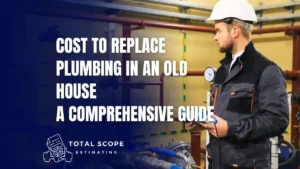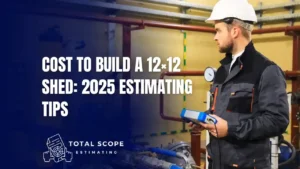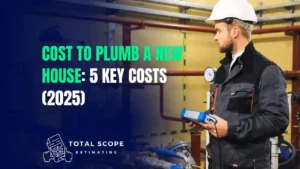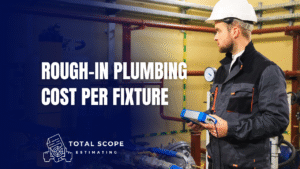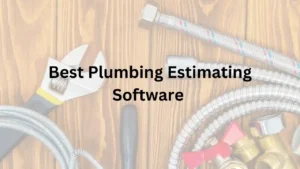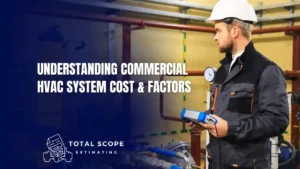HVAC systems (ventilation, heating, and air conditioners) are crucial for maintaining comfortable spaces in residential, commercial, and industrial buildings. Estimating HVAC costs requires a profound knowledge of the technical skills and experience needed to generate an accurate estimate.
It doesn’t matter if you are a residential contractor or dealing with large corporate organizations; a deep understanding of HVAC systems and intricacies is essential to create a more accurate HVAC cost estimate and control the project costs. This will give you a competitive edge and help you stand out among others. This article delves deep into how to estimate HVAC costs and which factors influence the HVAC cost estimates.
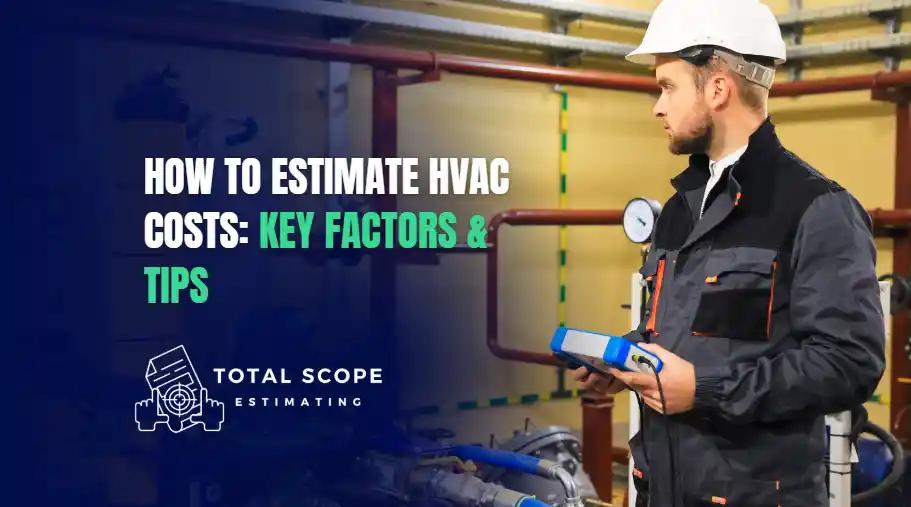
Understanding HVAC Systems
Before knowing how to estimate HVAC costs, you should understand the components of HVAC systems and how they work. You should grasp the types of HVAC systems commonly used in private and public spaces. They come in various sizes, ranging from single-zone systems for small buildings to large sizes for wide-spaced commercial and industrial buildings.
The level of comfort you want at each level also affects the number of HVAC systems installed. Similarly, harsh weather conditions, either too hot or too cold, significantly impact HVAC cost estimates. All these factors must be considered before estimating the final HVAC cost estimate.
You might like this too: How to Estimate For HVAC Replacement
9 Easy Steps on How to Estimate HVAC Costs
Once you understand what is HVAC and how it works, its time to learn about how to estimate HVAC costs. Here is the detailed guide.
1. Review Project Plans and Specifications
Start by carefully checking the project’s plans and specifications. Understand the scope of work, which includes the space’s dimensions, the type of HVAC system needed, energy efficiency standards, and any special requirements or regulations.
2. Conduct a Site Visit
Visit the site to get an accurate estimate. Look at the existing HVAC system, if there is one. Check the ductwork’s condition, the electrical supply’s adequacy, and any possible challenges like space limits and access issues. These factors will shape your project strategy.
3. Calculate Heating and Cooling Loads
Use the Manual J handbook for residential settings or Manual N for commercial applications to determine the space’s heating and cooling needs. Accurate load calculations ensure you choose equipment of the right size, which will impact the project’s cost and the system’s efficiency.
4. Choose the Right Equipment
Based on your load calculations, select the best HVAC equipment. Compare options while considering the manufacturer’s reputation, energy efficiency ratings, warranties, and lifecycle costs. Remember that high-efficiency units may cost more upfront but can save money in the long run.
5. Estimate Material and Labor Costs
List all necessary materials, including HVAC units, ductwork, insulation, control systems, and other parts. Also, factor in labor costs for the installation and any special skills needed, especially for advanced control systems. Keep potential overtime costs in mind to meet deadlines.
6. Include Overhead Costs and Profit Margins
As these can add up, account for overhead expenses like office supplies, vehicle operation, tools, insurance, and employee benefits. Apply profit margins consistently based on the project’s risks and complexity.
7. Establish a Contingency Margin
Add a contingency fund to your estimate for unexpected costs. This helps cover fluctuating material prices, unplanned labor issues, or project scope changes.
8. Use Estimating Software
Consider using HVAC estimating software to streamline your process. These programs aid in load calculations, managing quotes, and creating reports, reducing errors and saving you time.
9. Present the Estimate Clearly
When you present the estimate to the client, ensure it is clear and detailed. Break down costs so the client understands each part of their investment. Be ready to answer their questions and explain your calculations. Transparency builds trust in your services.
Conclusion
Estimating HVAC costs is a necessary process that can affect a project’s profitability. By closely examining project details, conducting site surveys, calculating accurate loads, and preparing detailed cost estimates, you can create dependable and competitive bids.
Although this process can be challenging, especially for beginners, following the steps in this guide will help you estimate HVAC costs reliably and confidently. With practice and the right tools, you can provide accurate mechanical cost estimates that lead to successful HVAC installations.
Are you ready to improve your HVAC estimating skills? With Total Scope Plumbing Estimator, you can access the latest and most reliable cost information. Whether you are an experienced professional or just starting, our comprehensive database will help you deliver accurate and competitive estimates with confidence.

